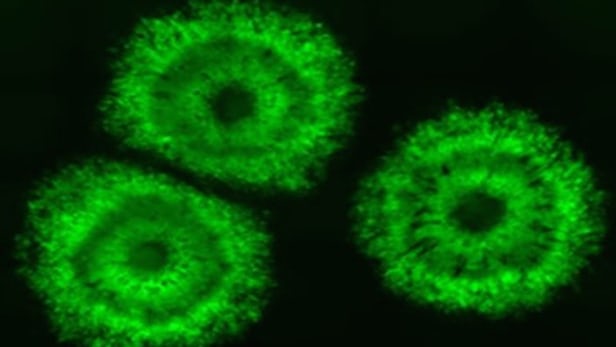
Treatments for symptoms of spinal cord injuries may be a step closer, as researchers at University of California San Francisco (UCSF) have transplanted human neurons into mice with these injuries, and found that over time they made new connections in the spine, reducing chronic pain and helping the mice regain some bladder control.
Difficulties with walking may seem like the most obvious symptom of spinal cord injury, but according to a 2004 study, bladder control was ranked as the top priority for treatment by almost 20 percent of paraplegics, and 10 percent of quadriplegics. Like chronic pain, loss of bladder control is a symptom of inflammation following spinal injury, which damages inhibitory spinal circuits that use the neurotransmitter, gamma-Aminobutyric acid (GABA). When GABA is lessened, the spine's ability to inhibit pain and control bladder function decreases.
The UCSF team wanted to test whether implanting human cells that produce GABA into mice with spinal cord injuries could reroute the damaged circuits, and whether that could help address pain and improve bladder control. To do so, they transplanted immature human GABA-producing cells into mice two weeks after they sustained an injury to the thoracic spinal cord, with the injection site being below the inflamed area caused by the injury.
When they checked in after six months, they found the cells had migrated towards the injured area, matured into inhibitory neurons and had actually formed new connections with the spinal cord, effectively restoring some function below the injury site. The mice showed significantly less signs of neuropathic pain and had much better bladder control when compared to injured mice that didn't receive the treatment.
"This is an important proof of principle for using cell therapy to repair damaged neural tissue," says Arnold Kriegstein, co-senior author of the study. "It brings us one step closer to using such transplants to bring much needed relief to people with spinal cord injuries."
While the experiment is an important step towards human treatment, the researchers stress that there's still plenty of work down that path. Future studies will investigate when the best time is for the treatment after the initial injury, and research possible safety issues regarding the transplant procedure.

 Previous page
Previous page Back to top
Back to top







